Hey, if it’s another city, it’s another fort. But, then the coastline of the eastern US is lined with forts and we’re traveling up this coast. During Jefferson’s Presidency, he saw the need to protect our borders from other countries which were bigger stronger. And, of course there were pirates. In 1812, the British actually got into America, burned Washington and President Monroe embarked on a program to build a series of forts. We’ve seen forts from Fort Jefferson off Key West, to Fort Caroline in Jacksonville to Fort Clinch in Fernandina and now to Fort Pulaski near Savannah, where we are now. And, there are more coming - believe it or not. (However, maybe we’ve seen enough forts.)
Fort Pulaski was built as strongly as the other forts: brick walls 7 1/2’ thick, heavy artillery and surrounded by a water moat. Certainly nothing could breach this. The US Chief of Engineers, Joseph Totten said: ‘You might as well bombard the Rocky Mountains.’ Don’t take him to the casino - you’ll lose all you’ve got. He was really wrong here.
38 years to build this massive fortification but it took only 30 hours to bring it down and force the defenders to surrender. How in the world did this happen? With rifled cannon like the one on the right below.

The Confederates had taken the fort soon after the Civil War had started and were manning it. But the Union forces were not too far away and had taken several other defensive positions around the area. Then General Lee ordered nearby Tybee Island abandoned and the Union moved in - Tybee Island, the only site from which Pulaski could be taken. For 2 months, under cover of darkness, Captain Gillmore moved his cannon close - 11 artillery batteries with 36 cannon and only a mile away. He asked the Confederates to surrender but they did not.
But Gillmore had a new weapon, a rifled cannon, which, with its grooved insides, could shoot a projectile straighter and stronger than a regular cannon could shoot a cannon ball. 30 hours later, the Confederates were forced to surrender since Gillmore had blown one corner of the fort away and was aiming for the powder magazine. 38 years to build, 30 hours to destroy.
That was the end of the impregnable brick fort as guardian of America’s shores. The VC here was good and had an excellent movie on the fort while the fort itself was interesting to tour. We could walk around the outside and see the corner nearest Gillmore’s artillery and see the damage they were causing, though it was patched by the Union right after they took the fort. The first picture shows what the corner looked like before the damage. The second what it looks like now.
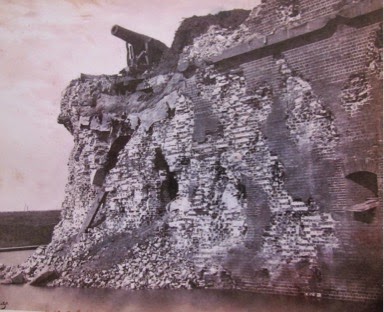
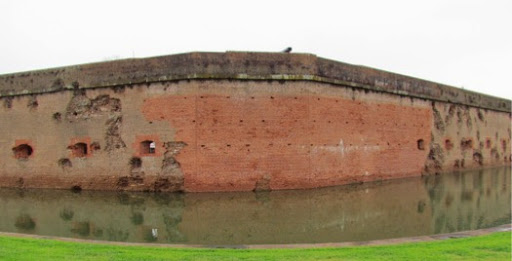
Some of the projectiles are still stuck in the walls.
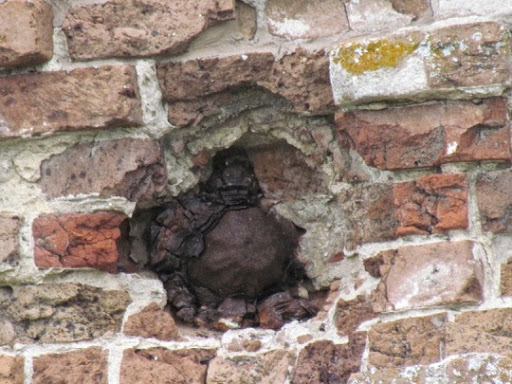
There was some neat graffiti inside the fort where the soldiers were bunked. ‘Our Union, now and forever.’
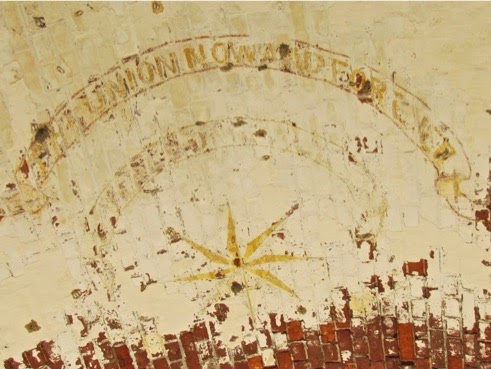
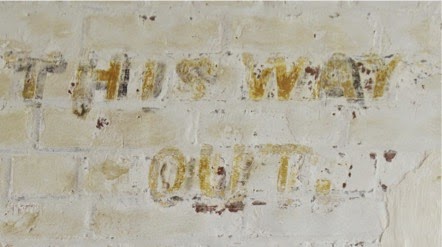
After we had seen the fort, we traveled on out to Tybee Island where we knew there was a light house - and a beach to walk. We wanted to walk along the beach again.
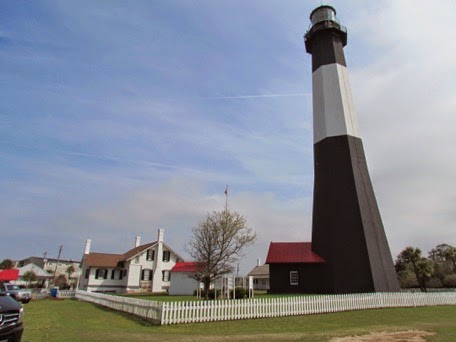
Neat old lighthouse with a 1st order Fresnel lens. Such a tiny light, such a powerful beam.
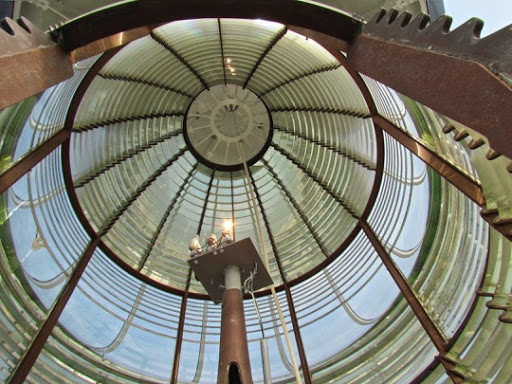
Great view from the top of the lighthouse.
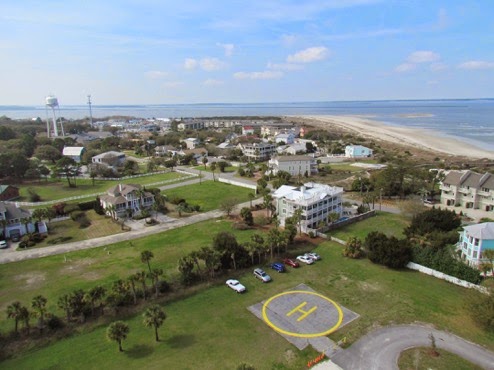
The beach had lots of tourists who had come south to catch some rays from the sun. Too bad, this is not the week. At times, I’m thinking that it is not the month. But it was a nice walk. We even found a nice creek.
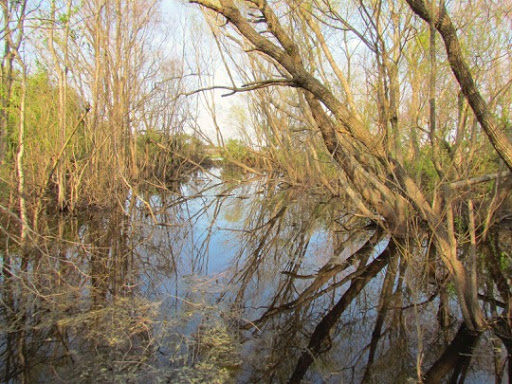

No comments:
Post a Comment